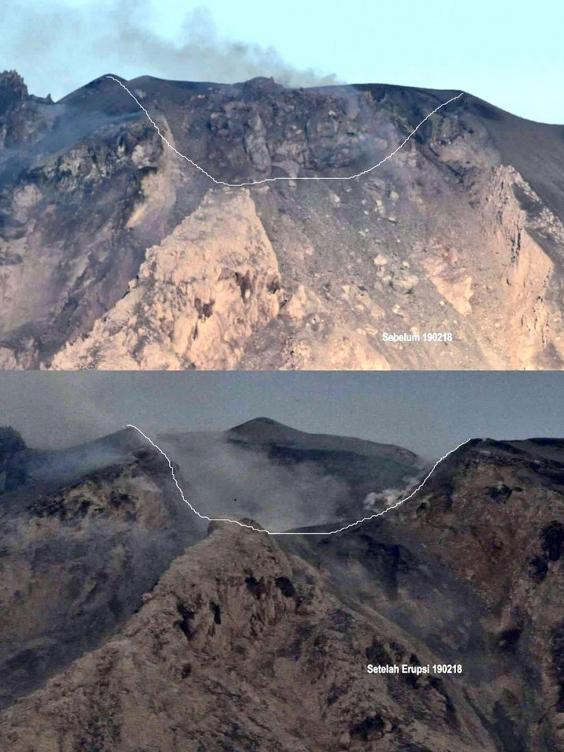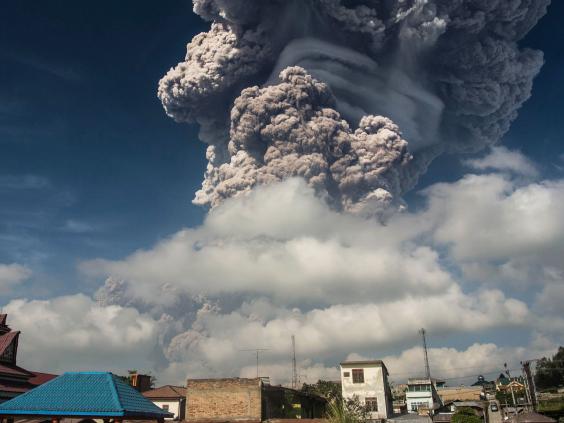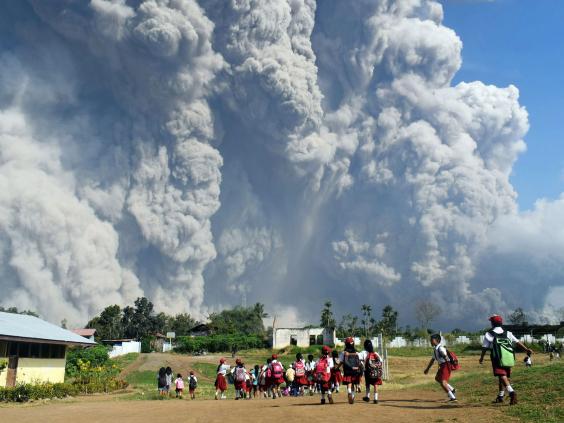When Indonesia’s Mount Sinabung volcano erupted on Monday morning, it shot a towering plume of ash 7km (4 miles) into the sky, blowing away much of its summit.
Before and after images show an enormous chunk missing from the stratovolcano following its biggest eruption this year.
Indonesia’s Centre for Volcanology and Geological Hazard Mitigation said the peak was “completely annihilated.”
Devy Kamil Syahbana, a volcanologist, said the missing chunk, known as the “lava dome,” had a volume of at least 1.6 million cubic metres (56.5 million cubic feet).
Indonesia raised flight warnings around the volcano on Sumatra island to red, its highest level, and said the ash cloud's top had reached 23,872ft (7,276m) according to a ground observer.
Nur Isnin Istianto, head of the regional airport authority, said Kutacane airport in Aceh province had been closed, but the wind direction allowed the airports of Kualanamu, Meulaboh and Silangit to remain open.
Mount Sinabung had lain dormant for four centuries before it first erupted in 2010, in an explosion which killed two people.
When it erupted in 2014, more than a dozen people were killed and thousands were evacuated.
No one was injured in Monday’s eruption, which was accompanied by multiple earthquakes as surrounding villages were showered with small rocks.
“In five districts it became dark with a visibility of about five metres,” Sutopo Purwo Nugroho, a spokesman for Indonesia’s Disaster Agency, said in a statement.
Video showed screaming children fleeing a school outside the volcano’s exclusion zone as a billowing column of ash rose in the background.
The disaster agency urged the public to stay out of a 7km (4 mile) exclusion zone around the crater.
It said they should watch for further warnings, which could cover floods.
Mount Sinabung is among more than 120 active volcanoes in Indonesia, which is prone to seismic upheaval due to its location on the Pacific “Ring of Fire,” an arc of volcanoes and fault lines encircling the Pacific Basin.
The 2,460m (8,071ft) volcano is among Indonesia’s most active and is one of three currently erupting in the archipelago.
Additional reporting by agencies









